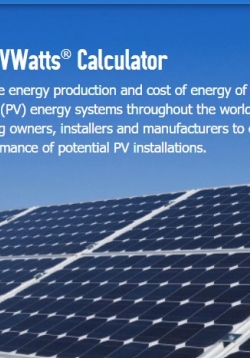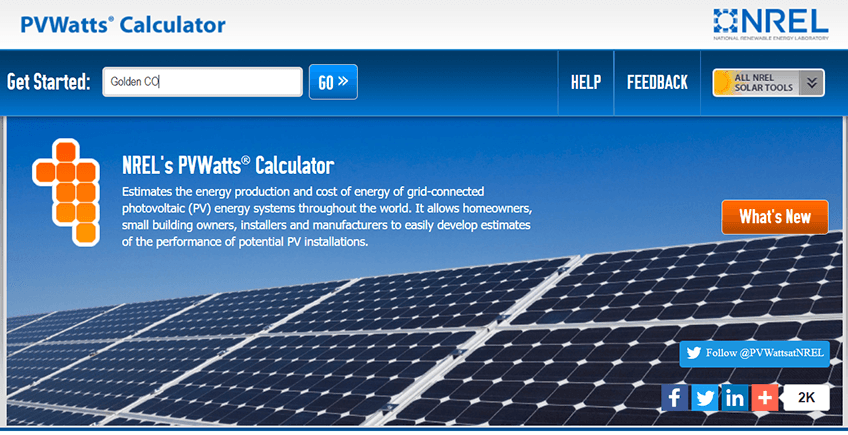
A multi-day home energy audit lesson which allows students to work with their family to explore energy usage in their homes.

A multi-day home energy audit lesson which allows students to work with their family to explore energy usage in their homes.

A series of over 150 digitial interacitves that allow students to explore a wide variety of science concepts, from simple energy transformations and motion, as well as beahvior of electricity in multiple contexts (static electricity, circuity, batteries, electromagnetism, fields, and more). Many include data collection and applied exploraion of science concepts in physics, chemistry, math, and more. Most are meant for secondary grades, but there are some good foundational energy interactives for upper elementary.

This online resource is a quick and easy-to-use energy production calculator for grid-tied solar PV systems installed throughout the world that uses NREL scientific data. This website is used by solar photovoltaic energy installation and engineering professionals on a daily basis!

As students begin to look at the role photovoltaics might play within the transportation energy sector, it is important for them to understand why the phasing-out of fossil fuels is such a daunting task. This lesson is designed to help students comprehend...
This lesson will let students do research to define terms that will be used in this unit. They will record this information in their Journals, which can be scientific or simple homemade notebooks. This lesson will also introduce the multimeter, small solar...
This lesson is designed to span 5 days with 50-minute sections. After the introduction day, each day the students work toward mastery on the TinkerCAD tutorial online to learn how to create printable 3D models. At the end of the 4 days the students will...
Part 2 builds on part 1, asking students to design a solar heater that more effectively collects solar energy. Students are provided with various building supplies and are asked to change one variable from the standard to construct a new, more effective...
In this lesson, students will begin to explore the potential and challenges related to using photovoltaics to supplement the power needed to charge batteries in BEVs. Students will test a variety of wiring options related to series and parallel wiring....
This is part of the Off the Grid Unit. In this lesson students will explore the concept of efficiency , and how to take data in order to calculate the efficiency of various cell phone or USB charging circuits. They will complete this process by using a...
Students will learn the difference between energy and power. They will then use this new understanding to compare the energy and power difference of light bulbs (incandescent, halogen, fluorescent, and LED) using a tool called a “Kill-A-Watt” meter....
Bonneville Environmental Foundation
1500 SW 1st Avenue, Suite 710
Portland OR 97201
phone: 503-248-1905